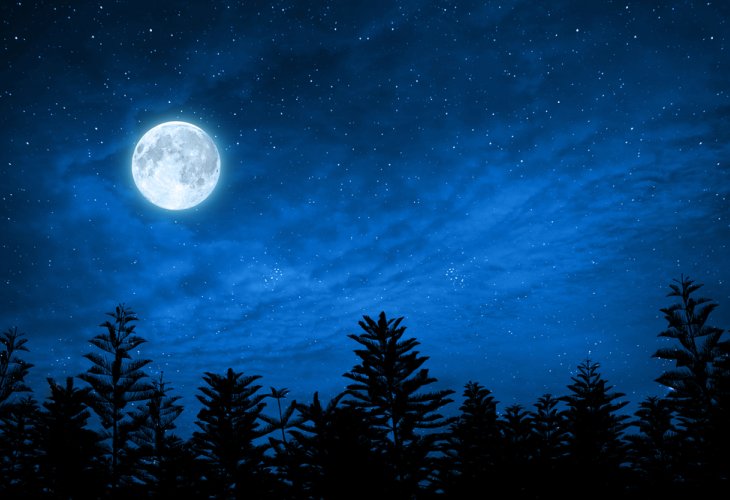In Search of God
Did the Sages Know the Secret of the Stars? Ancient Jewish Texts That Predicted Modern Astrophysics
Centuries before science discovered nuclear fusion, Jewish sages wrote that starlight comes from fire — a 2,000-year-old insight that anticipated one of astronomy’s greatest revelations
 (Photo: shutterstock)
(Photo: shutterstock)Is it possible that scientific knowledge about the origin of starlight — discovered by modern science only in recent centuries, was already recorded in Jewish sources nearly 2,000 years ago? Could this knowledge have been used in practical halachic rulings at the time? Let’s take a closer look.
The Mystery of Starlight
To the eye of an ancient observer, before the modern era, stars appeared simply as tiny white dots scattered across the night sky. Their source of light was a total mystery. Unlike the sun — whose blazing disk clearly suggests burning fire, the stars seemed far too distant and faint to share the same nature.
Today, of course, we know that the sun’s energy comes from nuclear fusion — the burning of hydrogen atoms deep within its core. But it took many centuries for this to be understood.
Only in the 16th century did astronomers first propose that the stars are actually suns like ours, only much farther away. it was not until the 20th century that scientists finally confirmed that starlight, like sunlight, is produced by hydrogen combustion and nuclear fusion.
This fundamental understanding of the stars’ fiery nature is barely 100 years old in modern science.
What Did Judaism Say Thousands of Years Earlier?
Astonishingly, ancient Jewish texts explicitly describe stars as fiery bodies — nearly two millennia before this was known to science. “The light of the stars is from fire.” “The stars… are lights of fire.”
(Pirkei DeRabbi Eliezer, ch. 20 — written nearly 2,000 years ago)
This knowledge was not only mentioned, but it was treated as a matter of certainty, significant enough to be applied in practical halachic rulings.
Halacha and the Fire of the Stars
Every week, at the end of Shabbat, Jews perform the Havdalah ceremony, marking the separation between the holy day and the rest of the week.
As the Torah commands: “Remember the Sabbath day to sanctify it” (Shemot 20:8), meaning, to sanctify it both at its entrance and at its departure (Maimonides, Sefer HaMitzvot).
During Havdalah, we recite the blessing “Borei Me’orei Ha’Esh” (“Who creates the lights of fire”) over a burning flame.
If one is traveling on Saturday night and has no candle or fire available, the Talmudic text provides a surprising answer: “If he has no fire, e may extend his hand toward the light of the stars, which are made of fire, and say: Blessed is He Who creates the lights of fire.” (Pirkei DeRabbi Eliezer, ch. 20)
According to this source, one could fulfill the mitzvah by reciting the blessing over starlight, as the stars themselves are fiery in nature!
Later Rabbinic Support
This same halachic principle appears in several classic works from the medieval period, including the 12th century: “If one was traveling, he may stretch out his hands toward the light of the stars, which are of fire, and say: Blessed is He Who creates the lights of fire.” (Sefer HaRokeach, Hilchot Havdalah §356)
Even later authorities recorded that many great rabbis ruled this way in practice: “I have found that many of our early sages
ruled and practiced accordingly — to recite Borei Me’orei Ha’Esh over the light of the stars at the conclusion of Shabbat.”
(Rabbi Moshe Stern of Debrecen, Kerem Shlomo, Year 2, Issue 6, p. 28; cited in Daf Al HaDaf, Pesachim 2a)
Astonishing, Isn’t It?
Here we see not only a spiritual tradition but an accurate scientific insight, expressed clearly and confidently in ancient rabbinic literature more than 1,800 years before the discovery of nuclear fusion.
Additional classic sources also support this halachic view:
Seder Rav Amram Gaon
Sha’arei Simchah by Rabbi Yitzhak ibn Giat (laws of Havdalah)
Likutei Pardes (attributed to Rashi)
Sefer HaRokeach (§356)
HaManhig, laws of Shabbat (§65)
Shibolei HaLeket (end of section two)
Or Zarua, laws of Motza’ei Shabbat (§93)
(Referenced by Rabbi Eliezer Waldenberg, Responsa Tzitz Eliezer, vol. 1, ch. 20)
A Modern Clarification
This practice is no longer followed today. In modern halacha, the blessing “Borei Me’orei Ha’Esh” is recited only over a candle flame, not over the stars, for two main reasons:
The Shulchan Aruch (Orach Chaim) does not rule this way.
The light of the stars is too faint to fulfill the requirement (see Yabia Omer, vol. 1, Orach Chaim).
Still, the historical fact remains extraordinary: Long before telescopes, spectroscopy, or nuclear physics, Jewish sages recorded that the stars shine because they are fiery bodies — a truth science would not rediscover for nearly two millennia.

